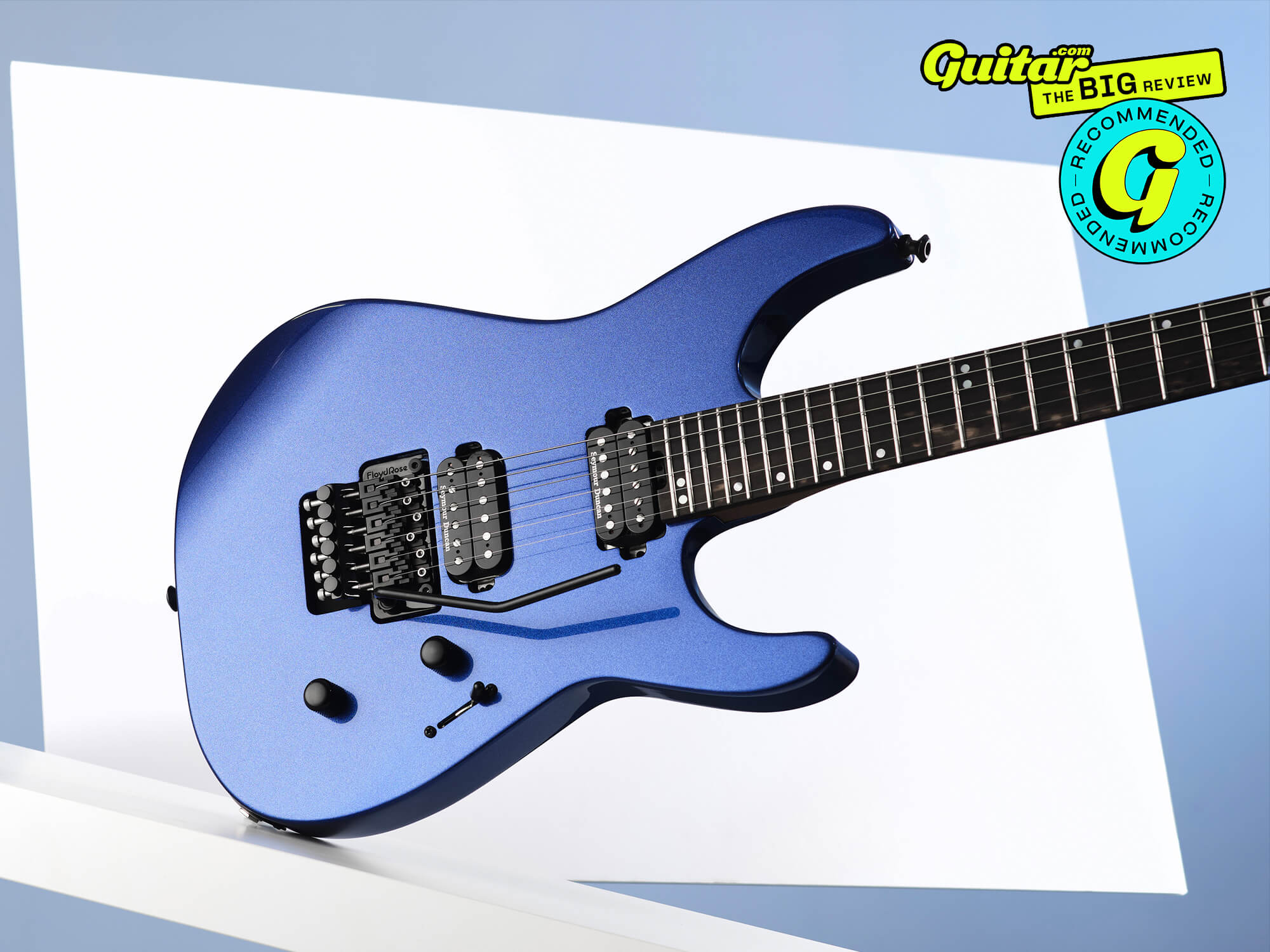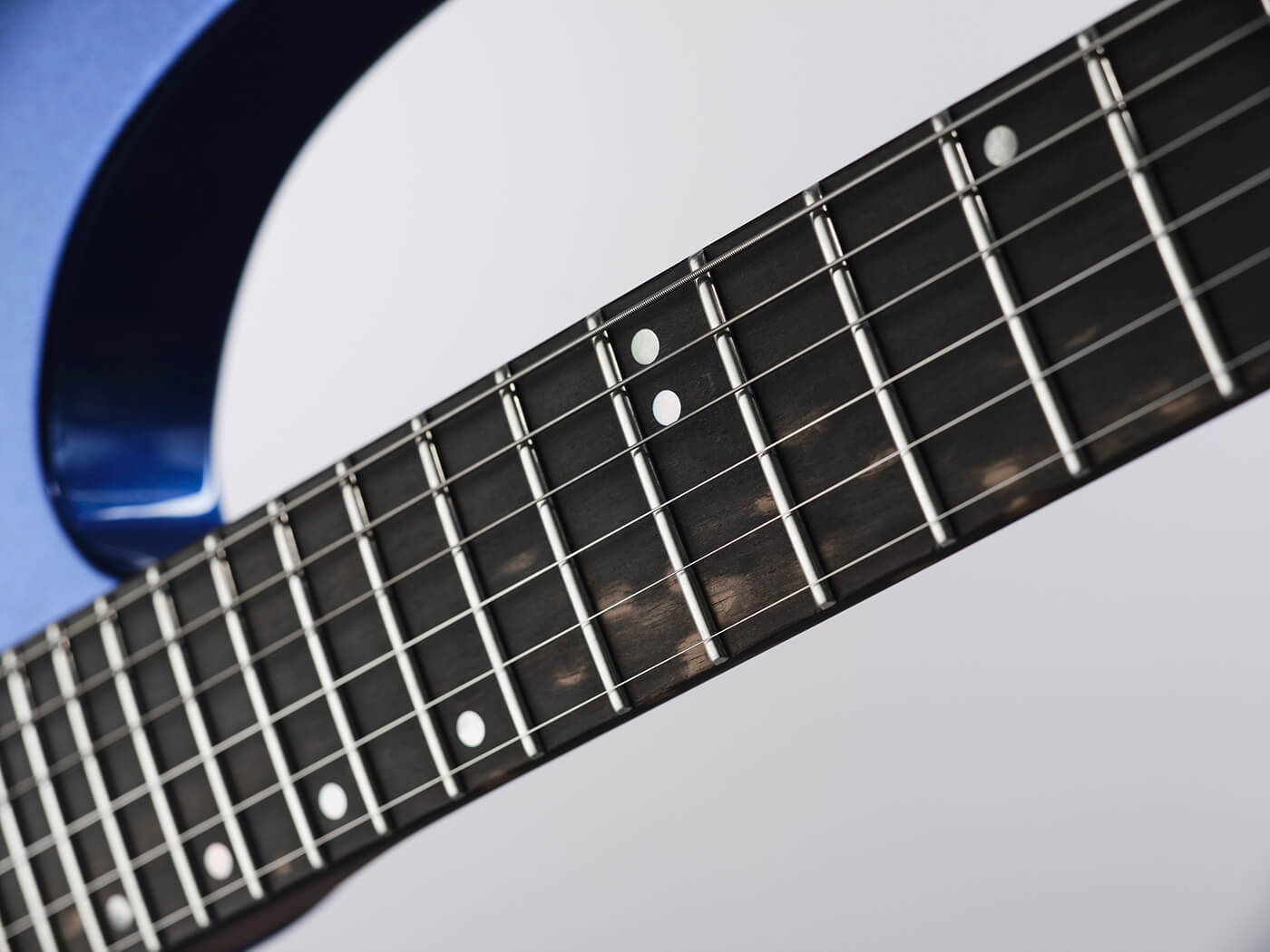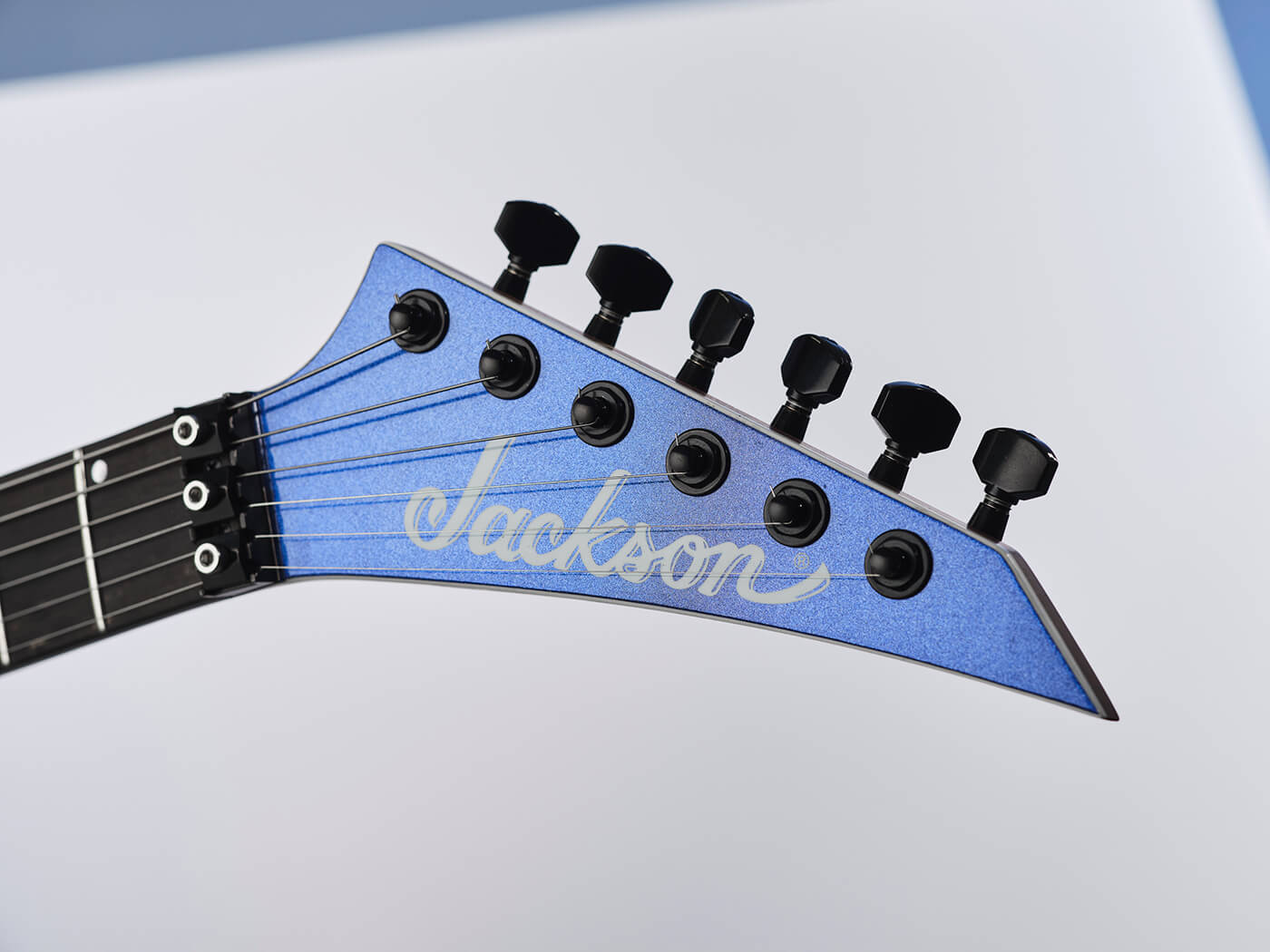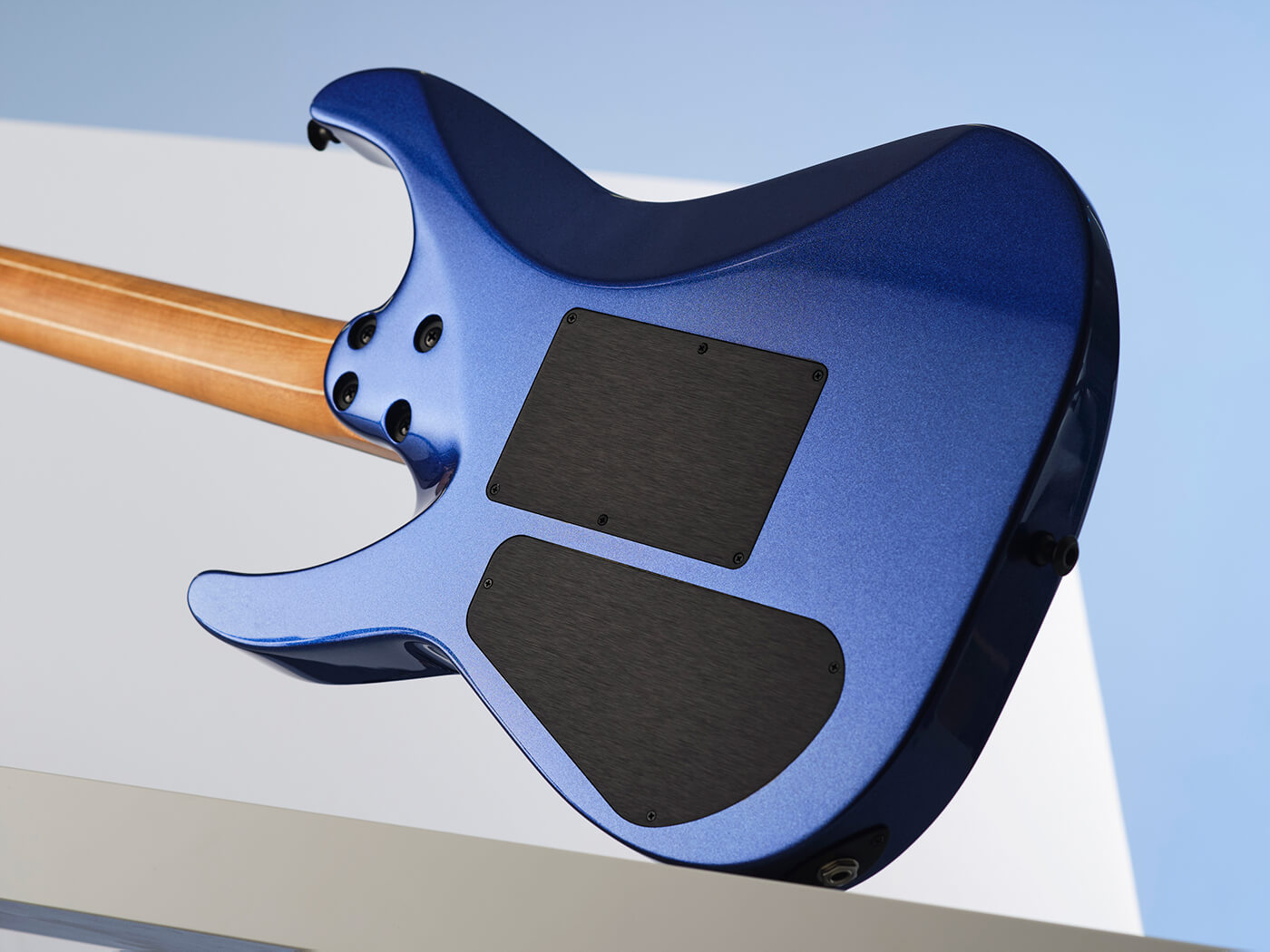Jackson American Series Virtuoso review – a shred machine to rule all shred machines?
Jackson doubles down on its American-made line with a bolt-on model expanding the options – and it’s built for speed!

Jackson American Series Virtuoso. Image: Adam Gasson
Review Overview
Our rating
9
Our verdict
$1,999/£1,799, jacksonguitars.com
When a guitar drops with a campaign that features Marty Friedman, Misha Mansoor and a gaggle of other modern heavy guitar hitters, you can be sure that whatever the product is, it’s a big deal. And so it is with the Jackson Virtuoso. After the highly successful launch of the American Series with the Soloist SL3 in 2022, the aforementioned slick promo video announced the expansion of Jackson’s USA production with the new Virtuoso series, billed as “a high octane instrument, built upon Jackson’s legacy and designed to suit the modern player’s need to blur genre lines and push sonic boundaries”.
Now, if you’re in any way familiar with the electric guitar world, you’ll know that the double-cut shred machine market is somewhat cluttered to say the least, but it is one in which Jackon has undeniable heritage and pedigree. So much so that you might even say that the strongest competition in this field comes from the Fender-owned brand’s other guitars.
However, despite ostensibly being quite similar, the Virtuoso differs from the Soloist in several ways. For starters, it’s based on the Dinky shape, and sports a five-piece roasted maple bolt-on neck instead of a neck-thru; essentially, it’s an entirely different construction. It’s also a less labour-intensive means of building a guitar at Fender’s Corona factory in California, which helps make the Virtuoso a whopping $600 cheaper than the Soloist at launch.
I always approach shred guitars with an air of trepidation, due to them often possessing very slim necks. Although I was someone who grew up with shred metal guitar and spent many an hour in music stores peering yearnfully through the glass cabinets at ‘Superstrats’ with matchstick-thin necks, over the years I have become a little more traditional in my tastes when it comes to girth. Having played ultra-thin necks for the first 15 years or so of my guitar journey, I’ve learned that they are not necessarily beneficial to faster playing, and can often lack the support my left hand requires.
However, all thin necks are not created equal, and it is certainly possible for players to feel adequate support with a slim neck – provided there’s healthy set of shoulders to take care of the underside of your first finger, and real estate for your thumb at the top of the neck for occasions when you want to perform those boomer bends. And yes, even if you are the youngest of shredders, I promise there will come a day when you will be looking to stretch that string upwards or downwards to express joy, angst… and any emotion in between!

Thankfully then, while the Virtuoso neck is slim, its shoulders are wide and comfortable, and there are some definite advantages to having this kind of neck – not least that it naturally encourages you to adopt a thumb-behind-the-neck posture, which is necessary for any wide stretches and other finger gymnastics. It’s called a Virtuoso after all.
Even virtuosos need assistance, however, and that has been provided in oversized Luminlay luminescent side markers – perfect for locating your hand position on dark stages. And whilst changing strings on a Floyd Rose-equipped guitar will always be something of a chore, the task is made a little simpler with Gotoh locking tuners.
This example’s sparkly Mystic Blue finish and black hardware is exactly the look you would expect to see on any Jackson guitar of the last 30 years, but modernity expresses itself in the form of a flat compound 12-16” radius with the enhanced comfort of rolled edges – meaning that a low action without buzz or choking is not only possible but encouraged. Behind the body’s lower cutaway, the wood has been further sculpted, so in conjunction with an already slim unobstructed neck join area, we have near-unencumbered access to the upper (jumbo) frets.

In Use
Jackson claims that the Virtuoso is the brand attempting to balance evolution and heritage, and the presence of a pairing of Seymour Duncan’s TB-4 (JB) and SH-1N (’59) humbuckers in the pickup department falls firmly in the latter camp. It would be refreshing to see a more progressive or novel pickup configuration, but by the same token you’d be hard-pushed to find a better combination for hard-rocking of any stripe.
Through my overdriven Suhr Badger 30, the accented midrange from the JB is prominent but with a little high-end sharpness provided by the streaked ebony fingerboard. We always find that an ebony ‘board is a natural hi-pass filter that attenuates the low end, and it is no different here: palm-muted power chords are clear and articulate which is why this is so often the preferred fingerboard wood for down-tuned and extended-range guitars. Lead lines have a prominent treble frequency, not too dissimilar to that provided by a maple board, and consequently, the lead lines we throw at it are both fluid and scything. Even when we run it through our cranked Marshall JVM410 it still sculps any flub in the low-end and what you’re left with is powerful heavy clarity in even the meanest of riffs.

The SHN-1 has long been regarded as one of the most versatile neck pickups out there and in the Virtuoso it provides the output necessary for fluidity in fast-picked and legato passages but is also clean enough to provide open-sounding chord work. On a cleaner setting it provides a very strident tone which means that snappy Hendrix double stops are not as percussive as lower-powered humbuckers or single coils, but perfect if you’re desiring a Metallica-style clean sound. In position four there’s skank enough for as much funk-fuelled rhythm work as you can throw at it.
In the last few years especially, Jackson has become a more recognisable brand to a newer generation thanks to it bringing aboard contemporary shredders such as Misha Mansoor, Brandon Ellis and Debbie Gough, all while staying true to its heritage.
Indeed, almost 40 years after the Soloist was released, there’s very little fundamental difference between the guitars Jackson was making then and the ones they are today – at least on the surface. The key difference however is the improved playability and build quality that only decades of experience of experienced builders working with top players can provide, and for that reason Jackson will remain a force to be reckoned with and the spiritual home of the Virtuoso, in every sense of the word.

Like this? Try these
- Charvel MJ DK24 $2,599/£2,099
- ESP E-II Horizon-III FR $2,499/£1,999
- Schecter Aaron Marshall AM-6 $1,399/£1,399




